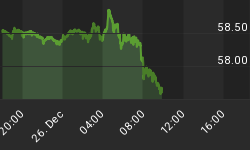In last Tuesday's Ahead of the Tape column in the Wall Street Journal, "After Subprime: Lax Lending Lurks Elsewhere," Justin Lahart speculates on whether other lending markets have been undermined by the same sort of risky behavior that has led to the unfolding crisis in the subprime finance sector.
If you ask Federal Reserve Board Governor Susan Bies, she would probably say "no." In a speech that same day, she said that she didn't "'think there will be a large impact (from subprime market risks) on the prime mortgage industry. On the fringes there may be some.... I think it's really in the subprime ARM market, it's isolated at this point,'" according to Reuters.
However, given the various incentives that encourage excessive risk-taking and dangerous decision-making by banks and other lenders in the U.S., odds are that the correct answer to the question of whether current developments signal much more to come is a resounding "yes."
Let's start with deposit insurance. If ever there was a reason for lenders to aggressively seek to boost returns without worrying too much about the consequences, including outright failure, it is the existence of an insurance program that guarantees little in the way of market discipline for institutions that run amok. Until, that is, it's too late.
First formed following the wave of bank failures during the Great Depression, the Federal Deposit Insurance Corporation safety net is a prime example of what can go wrong when you have government-sponsored moral hazard, a lack of market pricing, and political meddling distorting participant behavior in an ultra-competitive industry. Under the FDIC-underwritten lending regime, it is not surprising that bankers have increasingly reached out to those who offer to pay the most for borrowed money, seemingly regardless of their willingness and ability to honor their obligations in future.
That is one reason why subprime loans comprised 12.75% of the $10.2 trillion mortgage market in 2006, up from 8.5% in 2001, mortgage-related activities accounted for a record 62 percent of commercial banks' earnings in 2005 versus 33 percent two decades earlier, and lenders are currently falling over themselves to finance debt-laden private equity buyouts, which amounted to around $400 billion in the U.S. alone last year.
In an environment where depositors don't seem overly concerned about the risk of loss, is it any wonder that those who are entrusted to look after their money feel pretty much the same way?
The phenomenal growth of securitization, where assets such as loans are sliced and diced and repackaged into tradable instruments, has also had unintended and unwelcome consequences. For all the so-called benefits of securitization, including the ability to shift risk from those who don't want it to those who presumably do, there is a significant downside element. "Originators" (e.g., bankers) have less incentive than in the past to carefully evaluate credit risk before a loan is granted and then monitor the borrower's financial health over time.
On the contrary, because they receive a fee up front and then pass the obligation on to others, they have good reason to focus on quantity, not quality, when it comes to credit-granting decisions. That goes some way towards explaining record U.S. issuance of $750 billion of asset-backed fixed-income securities last year, an increase of around 275 percent from 1999 levels.
And if that means a few bad apples get through, so be it; it's somebody else's problem -- or so many lenders believed during the boom times of the past few years, before the housing bubble burst and growing numbers of strapped borrowers begin to default on just-arranged mortgages before the ink on the paperwork was even dry.
Finally, despite all the hand-clapping and hoopla, globalization and consolidation in the financial services industry have also encouraged a considerable degree of bad behavior. For one thing, the rise of aggressive and lightly-regulated competitors such as hedge funds, along with a expansion by myriad firms into products, markets, and countries with deficient or overlapping regulatory regimes, has spurred widespread "regulatory arbitrage." That has helped to facilitate a broad shift into ever-riskier activities, including loans and financing commitments for those who probably wouldn't have qualified in the old days.
Meanwhile, the dramatic consolidation that has taken place in the financial services industry, aided in part by the Gramm-Leach-Bliley Act of 1999, as well as the widely acknowledged reality of a domestic and global regulatory framework that has not kept pace with rapid innovation, have also encouraged something akin to a "race to the bottom" as far as dangerous risk-taking is concerned.
At this point, it's almost certainly too late to fix what's already been done. Rather, the best course of action is for everyone -- industry insiders, regulators, and politicians -- to wake up to the fact that the groundwork for a fast-expanding credit crunch is firmly in place and that the upheaval in the subprime market is merely the tip of the iceberg.
By acknowledging the harsh reality, rather than hoping or pretending otherwise, it makes the prospect of finding workable solutions for dealing with the impending crises ahead that much more likely.
















